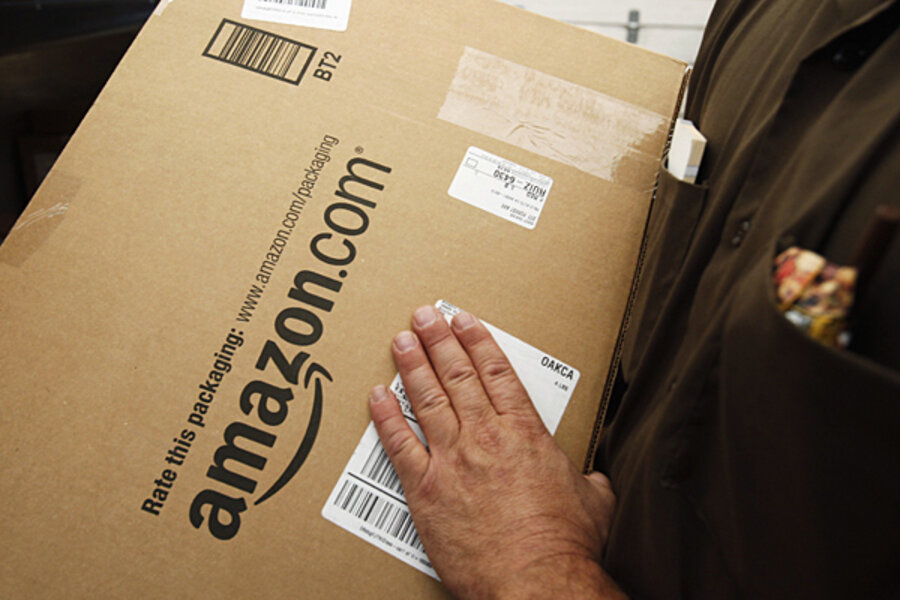How to ship a package and save money
Loading...
As many of you know, I actively trade (and sometimes sell) quite a few things thanks to the internet, which means over the course of the past several years, I’ve become intimately familiar with how the different package shipment services work. In the past few years, I’ve used the postal service, FedEx, and UPS to ship packages and I’ve learned a few things about how to maximize your buck.
All three organizations have disgruntled/bad employees who may damage your package.
I’ve read countless times on countless forums about how either UPS, the postal service, or FedEx damages everything they send or receive from them. Different people will swear by different services and completely avoid other services.
From what I’ve seen, it mostly comes down to individual people. The vast majority of people working for each of these organizations will treat your package well (or well enough, at least). There are a few people that work for each of these organizations who don’t respect your package at all.
You might be unfortunate enough to live in an area where your delivery person is disgruntled and abuses your packages, leaving a bad taste in your mouth. Trust me – given the number of packages I’ve shipped and received over the last decade, all of the services tend to mostly do good work with a few bad apples in each.
I cannot say that I’ve seen one service or the other have a significant edge in terms of item security in a broad sense. Naturally, there will be local areas where one outpaces another, but that’s entirely dependent on local employees.
Because of that, you must package your items well.
Pad everything with as much padding as you can. Packing peanuts work really well for this, but I’ve also used balled-up old newspapers and bubble wrap.
Since I both send and receive packages on a regular basis, I save all of the packing peanuts and bubble wrap that I receive for future packaging. I also save old newspapers for this very purpose. Whenever I see a cardboard box that’s around the right size for my shipping needs, I break it down and keep it in the garage. It’s easy to make the cost of shipping materials very cheap if you just watch out for it as you go along.
When you box up a package, every seam should be covered in packing tape and, when you shake the box, nothing inside should rattle at all. The only way that rattling is acceptable is if you’re sending an item in shrinkwrap and that item rattles within the shrinkwrap.
If you don’t do this, you’re taking a very serious risk that items inside the package are going to show up with some kind of damage on them. As I said above, it really depends on who handles the package between your town and the destination, but the less secure your packaging is, the more you leave things in the hands of the employees that touch your packages.
In terms of cost, for one-time packages, it’s hard to beat the postal service.
UPS and FedEx tend to offer large discounts to companies who use them for bulk shipping – think Amazon. What that generally means is that on most packages, if you’re an individual customer walking in the door, you’re going to get the best price from the post office for shipping.
There are exceptions. If your package is larger than, say, 24 inches in any dimension, you might want to price it using all of the services. I’ve found that on individual larger packages, I’m better off with UPS, unless the item is valuable and needs insurance, in which case FedEx usually comes out on top.
Also, if you’re starting a business of some kind where you’re going to be shipping a lot of packages, you may want to talk to the shipping companies about negotiating a bulk rate. That’s when the various companies get significantly less expensive and UPS and FedEx often undercut the postal service.
Tracking and insurance are on a per-item basis.
It mostly depends on the arrangement I’ve got with the recipient. If it’s not a regular trading partner, I’ll get both tracking and insurance. Usually, with a regular partner, I just get tracking, particularly if I’m confident in how I’ve packaged the item.
For gifts and items like that, I’d only get tracking unless I was concerned about covering the cost of the item in the event of a disaster. In other words, I’d only insure something rather expensive.
The slow boat is usually the right boat.
In terms of shipping speed, always ask for all options and choose the cheapest one. Within the United States, even the slowest options are generally only a few days slower than the fastest ones, and if that slowness can save you a few bucks, it’s well worth it.
For example, whenever I ship a book, I’m almost always using Media Mail as it’s incredibly cheap for books and other such items. I can usually ship a book for under $2 and it arrives usually within a week (though I’m positioned in the center of the country, which helps). Since most packages I send aren’t incredibly urgent, this works really well.
So, to summarize:
+ I use recycled packing materials and pack my items extremely well so that there’s no rattling at all.
+ I use the postal service for smaller packages and shop around for larger ones.
+ I usually get tracking as a “guarantee” that I’ve properly shipped the item, but only insure in rare situations.
+ I use the cheapest possible shipping option.
This procedure shaves several dollars off of every single package that I ship, leaving me with more money in hand and better results in terms of the value of a trade or an item sold.
The post How to Frugally Ship Packages appeared first on The Simple Dollar.








